Putting firmware 0127/0547 to the test Yaesu issued a firmware update with the description "CW keying bandwidth is improved." Below we take a look at some of the test results and assess the effectiveness of the new code version. At the end, I have pulled the same data from the K3 for comparison. Test results were gathered using a QS1R. Rigs were run at full power (200W Yaesu, 100W K3). I had considered using the Rigol SA but the RM noise was judged to be too high for close-in analysis. CW mode; 60 WPM dit string. CW Occupied Bandwidth - before update The FT-5000 provides 4 user-adjustable settings for rise time. As the rise time is shorter, the occupied bandwidth should be degraded. The plots below are arranged in 6-4-2-1 mS sequence. Signal levels at an arbitrary bandwidth of 1 KHz provides a basis for comparison, although the Yaesu has quite a spread of energy content at about the -60 dBc level as can be observed from the single and double bump shoulders seen in the plots. 6 mS - click for full-size view  4 mS - click for full size view 
2 mS 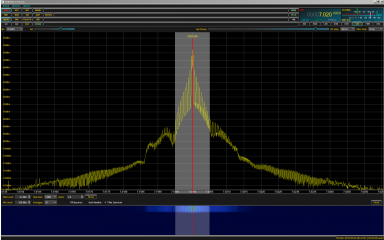
1 mS 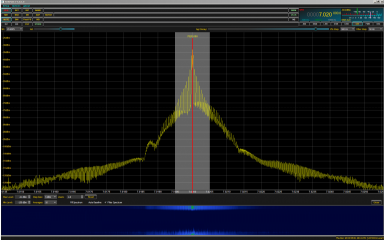
CW Occupied Bandwidth - after update 6 mS - click for full size view 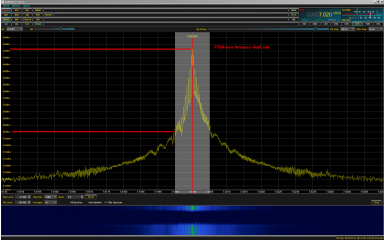
4 mS - click for full size view 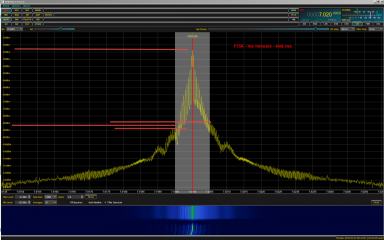
2 mS 
1 mS 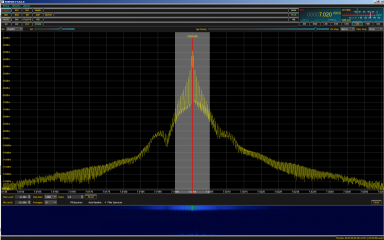
K3 ReferenceMuch has been made of the K3's bandwidth and thanks to K3PA, one was available for testing. At the 1 KHz level, it's about 10 dB better than the FT5K with the most favorable 6 mS rise time. The K3's slope widens out a bit at the -65 dBc level however it continues on down to the noise floor more or less in a steep trajectory. The Yaesu by comparison is quite a bit wider at these lower levels. The K3 is roughly 5 KHz wide at the noise floor where the FT5K is about double that. K3 - click for full size view 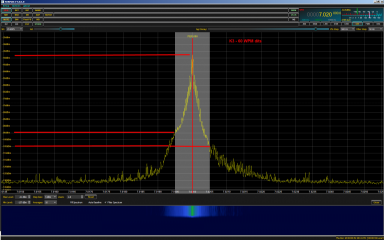
ConclusionsThe new firmware is a definite improvement for the FT5K and CW users should make the effort to perform the update of their rigs. And FT5K owners interested in signal quality will want to use the 6 mS rise time menu option to have the cleanest signal. Comparing the FT5K @ 6 mS rise time and the K3, the graphs are roughly the same in occupied bandwidth at the 1 KHz point, with the K3 being a bit more narrow in width as we go down in strength compared to the FT5K. Below that point the K3 is clearly cleaner. Having said the K3 is cleaner, I'm not sure that at lower levels (~ -65 dBc and below) the energy content is significant. In a contest with lots of signals, the noise floor just won't be low enough. However, I can envision a case with DX working split where the energy content of the 5K could potentially cover the sending station's signal because at 2 KHz offset, we can see a roughly 10 dB lift of the noise floor. This is probably less of a factor in application because the DX and the FT5K should not be transmitting at the same time. |